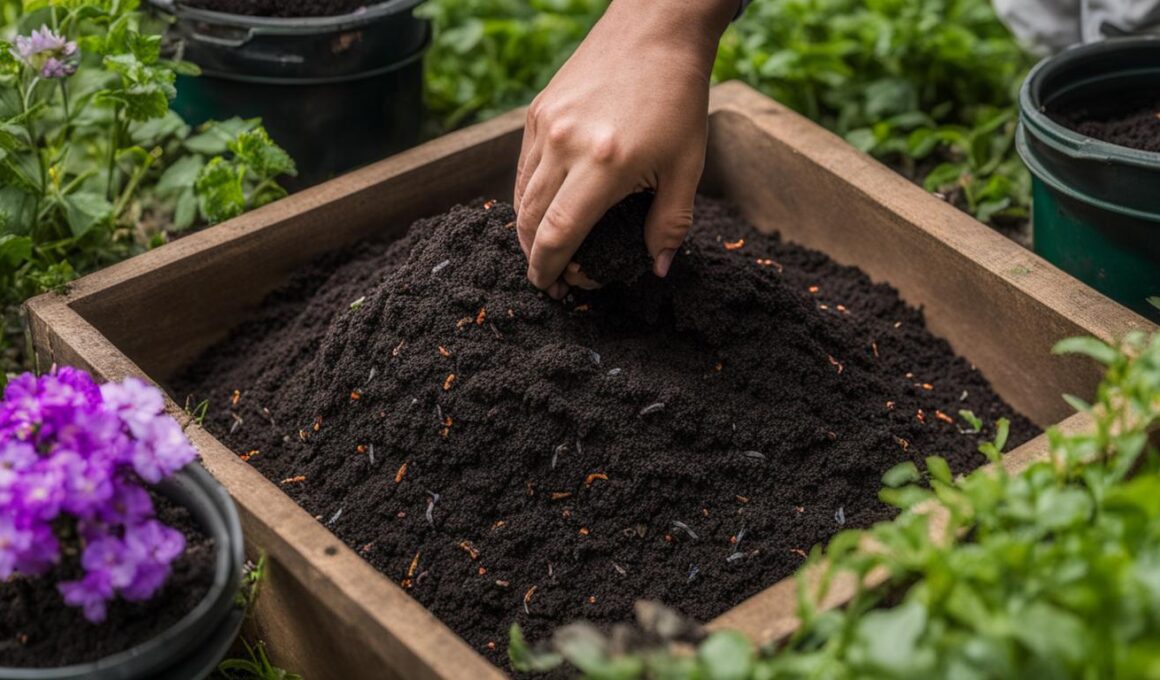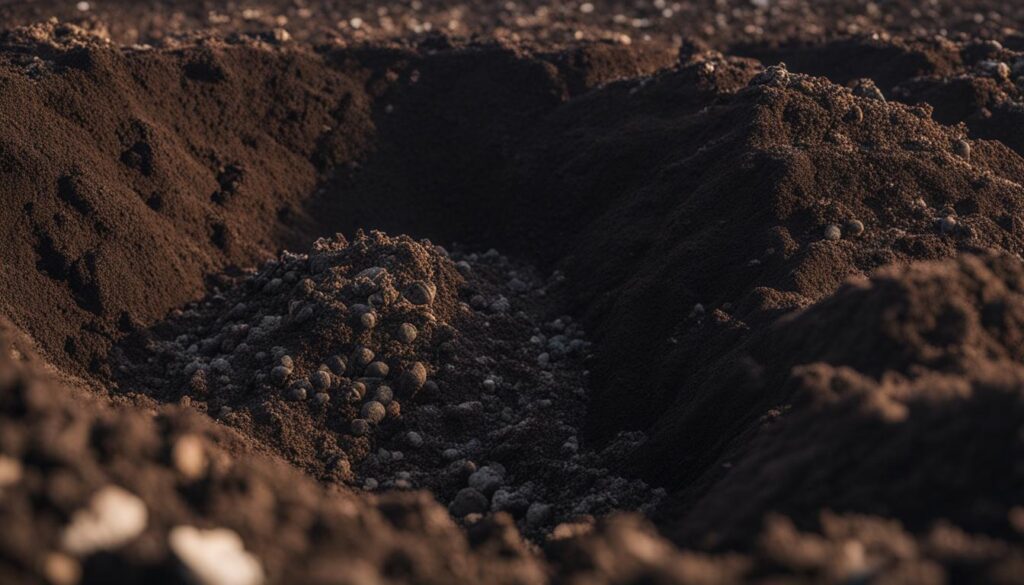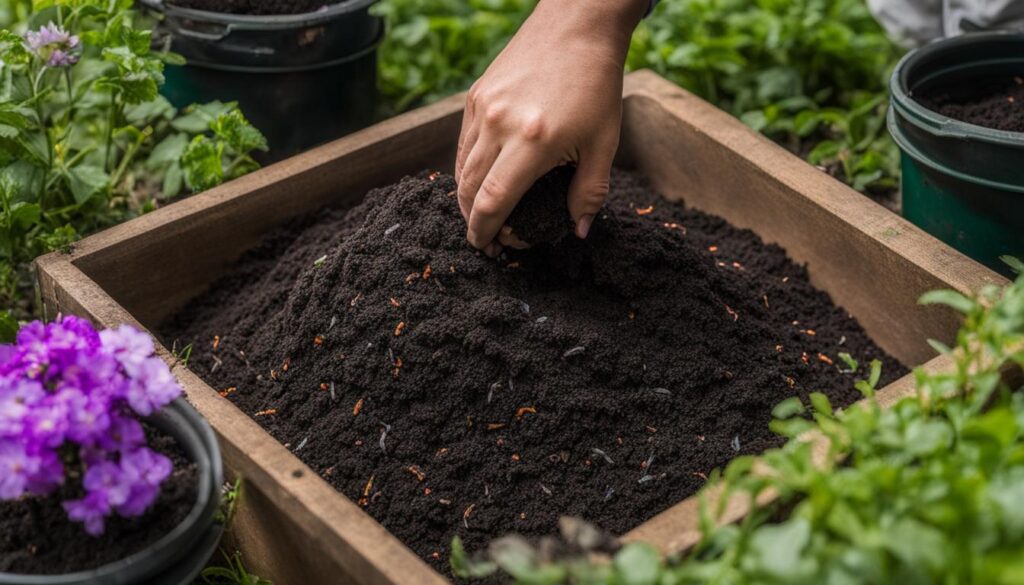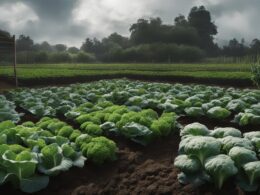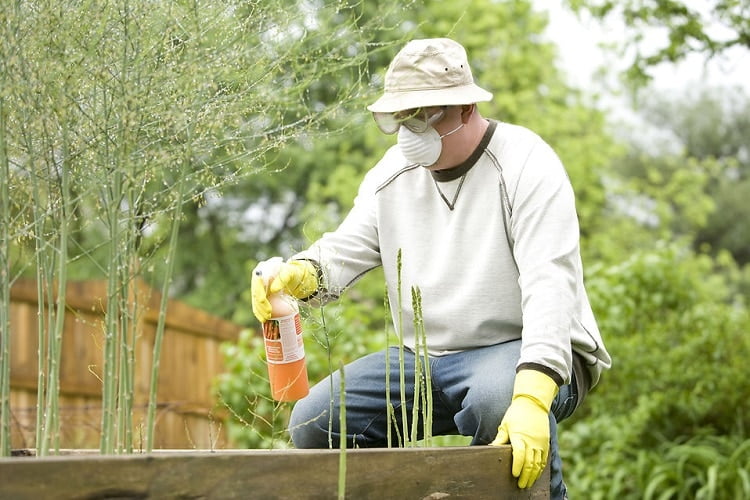Are you looking for a natural and nutrient-dense additive to enrich your garden? Look no further than worm castings, also known as “black gold.” Worm castings are a type of natural fertilizer that provide rich, readily-available nutrients for plants and improve soil structure. By incorporating worm castings into your gardening routine, you can boost the health and productivity of your garden while practicing sustainable gardening techniques.
But how exactly do you collect worm castings effectively? In this step-by-step guide, we will walk you through the process of harvesting worm castings, from establishing a healthy worm bin to choosing the right method for collecting the castings.
Key Takeaways:
- Worm castings are a natural fertilizer and nutrient-dense additive for your garden.
- Establishing a healthy worm bin is crucial for successful harvesting.
- Methods for collecting worm castings include hand scooping and using a screen system.
- Harvested worm castings can be used directly in the garden or added to seedling start mix.
- Worm castings improve soil structure, aeration, drainage, and moisture retention.
Creating the Ideal Environment for Harvesting Worm Castings
To ensure a successful harvest of worm castings, it is crucial to establish the perfect environment in your worm bin. This starts with a routine of feeding and fluffing the contents of the bin. By providing a consistent source of food and regularly aerating the bedding, you encourage the worms to eat, break down the materials, and transform them into nutrient-rich castings.
A few weeks before you plan to harvest the castings, you can prompt the worms to migrate to one side of the bin. To do this, stir and spread the contents of the bin and concentrate your feeding on one side. This will entice the worms to gather on that side, leaving the opposite side relatively worm-free. This technique simplifies the process of collecting the castings, as you won’t need to manually separate the worms from the castings.
By creating an environment that promotes worm migration, you set the stage for an efficient and effective harvesting process. This method allows you to maximize the amount of castings you collect while minimizing the number of worms that end up in your harvest.
Feeding and Fluffing Routine Tips:
- Feed your worms regularly with a balanced mix of food scraps, such as fruit and vegetable peels, coffee grounds, and crushed eggshells.
- Avoid adding large amounts of citrus fruits, onions, garlic, or spicy foods, as these can be harmful to the worms.
- Once a week, gently fluff the bedding in the worm bin using a fork or your hands. This helps to aerate the material and prevent it from compacting.
- Add small amounts of water if the bedding becomes too dry or sprinkle in some shredded newspaper if it becomes too wet.
Establishing a healthy feeding and fluffing routine and creating the right conditions for worm migration will greatly enhance your ability to harvest worm castings effectively. These nutrient-rich castings will provide a natural and sustainable boost to your garden, promoting lush plant growth and overall soil health.
Hand Harvesting Worm Castings
When it comes to collecting worm castings, one simple and straightforward method is through hand harvesting. This method allows you to directly scoop out the finished castings from the resting side of the worm bin using a small trowel. By gently digging into the castings, you can collect them and transfer them into a bucket or container for later use.
However, it’s important to note that depending on the breakdown of materials in the bin and the migration of worms, there may be the need to sift through the castings by hand. This is to ensure that any large pieces of food matter, lumps of shredded paper, or remaining worms are removed. By manually sifting through the castings, you can separate out any unwanted materials and ensure that you are left with pure worm castings.
Additionally, if the castings have clumped together, it may be necessary to break them up to achieve a more uniform texture. This can be done by gently crumbling the clumps between your fingers or by using a mesh screen to further sift and break up the castings. By breaking apart clumps, you can ensure that the worm castings are loose and easy to work with.
Hand harvesting may require a bit more time and effort compared to other methods, but it can be an effective way to collect worm castings for your garden. Just remember to be thorough in your collection process, sifting through the castings to remove any unwanted materials, and breaking up any clumps for a more consistent texture. By hand harvesting worm castings, you can ensure that you are getting the most out of your vermicomposting efforts and providing your garden with a nutrient-rich soil amendment.
Using a Screen to Harvest and Sift Worm Castings
When it comes to efficient harvesting of worm castings, using a screen system can make the process quick and effective. The screen system allows you to separate the castings from any remaining worms or large pieces of matter, ensuring that you have pure, high-quality castings for use in your garden. Here’s how you can utilize a screen to harvest and sift your worm castings:
- Place a screen frame on top of a container or tarp that will catch the sifted castings. Make sure the screen has small enough holes to allow the castings to pass through but prevent larger debris from falling through.
- Gently dump the worm castings onto the screen, spreading them out evenly.
- Using your hands or a tool, gently push and sift the castings through the screen. The castings will fall through the screen into the container, while any remaining worms or larger pieces of matter will stay on top of the screen.
- Once most of the castings have passed through the screen, you can remove the remaining worms and debris and return them to the worm bin.
- Repeat the process until all of the castings have been sifted and separated from unwanted materials.
Using a screen system not only allows you to harvest your worm castings efficiently, but it also ensures that you have a clean and pure product to use in your garden. The sifted castings can be directly applied to your garden beds or mixed into potting soil for container plants. The remaining worms and debris can be returned to the worm bin to continue their work of producing more castings. With a screen system, you can easily collect the nutrient-rich worm castings while keeping your garden clean and thriving.
Benefits of Using a Screen to Harvest Worm Castings
Using a screen system for harvesting worm castings offers several advantages:
- Efficient: The screen system allows you to quickly sift through the castings, separating them from worms and large debris in a relatively short amount of time.
- Pure Castings: By removing any remaining worms or larger pieces of matter, you are left with clean, high-quality worm castings that can be directly applied to your garden.
- Easy Cleanup: The container or tarp placed underneath the screen catches the sifted castings, making cleanup a breeze.
- Reusable: The screen system can be used repeatedly, ensuring that you can continue harvesting your worm castings efficiently over time.
By utilizing a screen system for harvesting and sifting your worm castings, you can streamline the process and ensure that you have nutrient-rich castings ready to enhance the health and productivity of your garden. So, give it a try and experience the benefits of an efficient and effective method for collecting worm castings.
Can Worm Castings be Used as the Soil for a 3 Gallon Bucket?
Yes, worm castings can be used to fill a 3 gallon bucket with soil. Worm castings are nutrient-rich and create a healthy environment for plant growth. Simply use the castings to fill the bucket and your plants will thrive in the nutrient-dense soil.
Conclusion
Collecting worm castings is a simple and eco-friendly way to enhance your garden’s soil with a nutrient-rich, natural fertilizer. These worm-produced castings, also known as “black gold,” offer a sustainable solution for improving the health and productivity of your plants.
By incorporating worm castings into your garden beds, you can enrich the soil with essential nutrients, enhancing its overall quality. These castings act as a garden fertilizer, providing plants with the nourishment they need to thrive. The nutrient-rich soil resulting from the application of worm castings promotes optimal plant growth and development.
Not only are worm castings beneficial for your garden, but they also contribute to sustainable gardening practices. By utilizing these natural fertilizers, you are reducing reliance on chemical-based alternatives, minimizing environmental impact, and fostering a more balanced ecosystem in your garden. Sustainable gardening is a responsible way to maintain a healthy environment for both plants and beneficial soil organisms.
With their versatility and effectiveness, worm castings offer a valuable resource for any gardener. Whether you choose to use them directly in your garden beds, incorporate them into seedling start mix, or create aerated compost tea, worm castings provide a reliable and environmentally-friendly means of enhancing soil fertility and promoting optimal plant growth.
FAQ
How long should I establish a worm bin before harvesting the castings?
It is recommended to establish a worm bin for a few months to allow the worms time to eat and break down the food and bedding into castings.
How can I encourage the worms to migrate before harvesting?
To encourage worm migration, you can stir and spread the contents of the bin and feed the worms exclusively on one side. This will leave the opposite side of the bin free of worms, making it easier to harvest the castings.
What is the best method for hand harvesting worm castings?
Using a small trowel, you can directly scoop out the finished castings from the resting side of the bin into a bucket. Depending on the breakdown of materials and worm migration, you may need to pick through the castings by hand to remove any large pieces of food matter, lumps of shredded paper, or remaining worms. Clumpy castings can be broken up for a more uniform texture.
How does the screen system work for harvesting worm castings?
With a screen frame placed on top of a container, you can dump the castings onto the screen. By pushing and sifting the castings, they will fall through the screen while any large pieces of matter, worms, or debris will remain on top. This process can be repeated until all of the castings have been sifted and separated.





